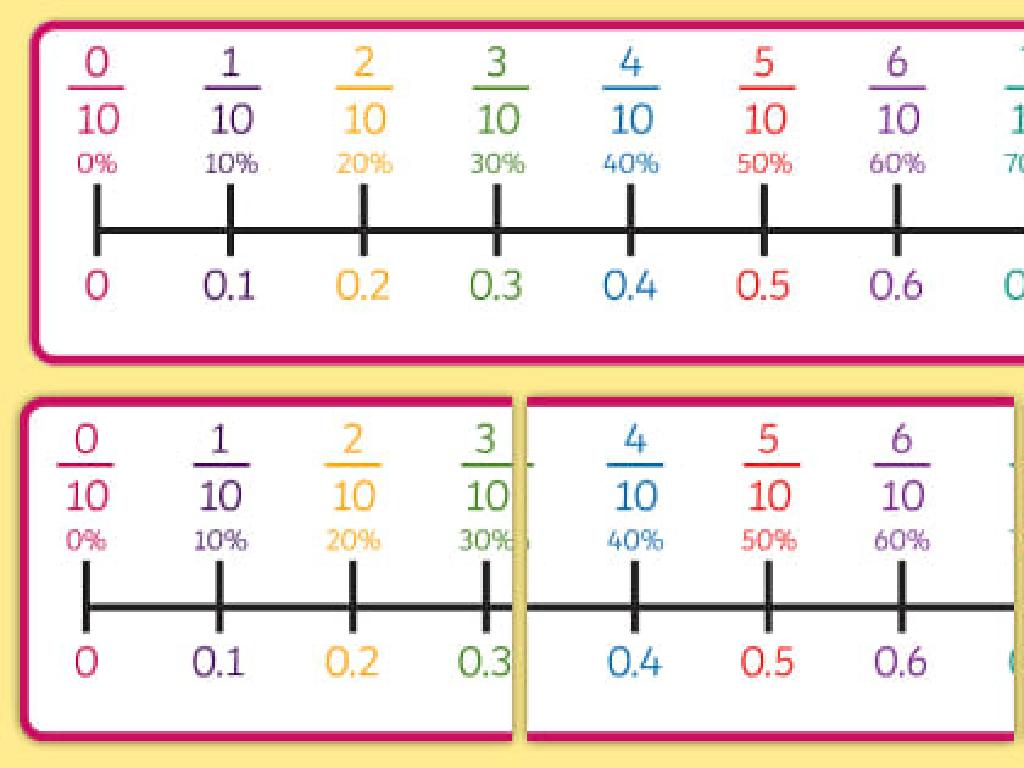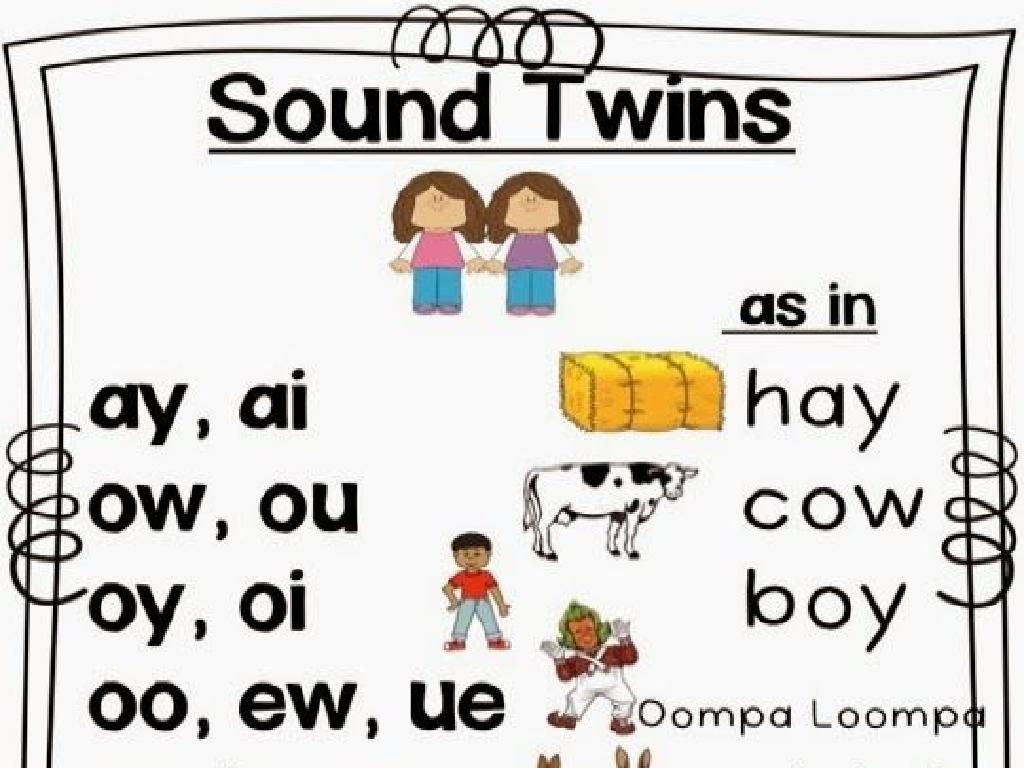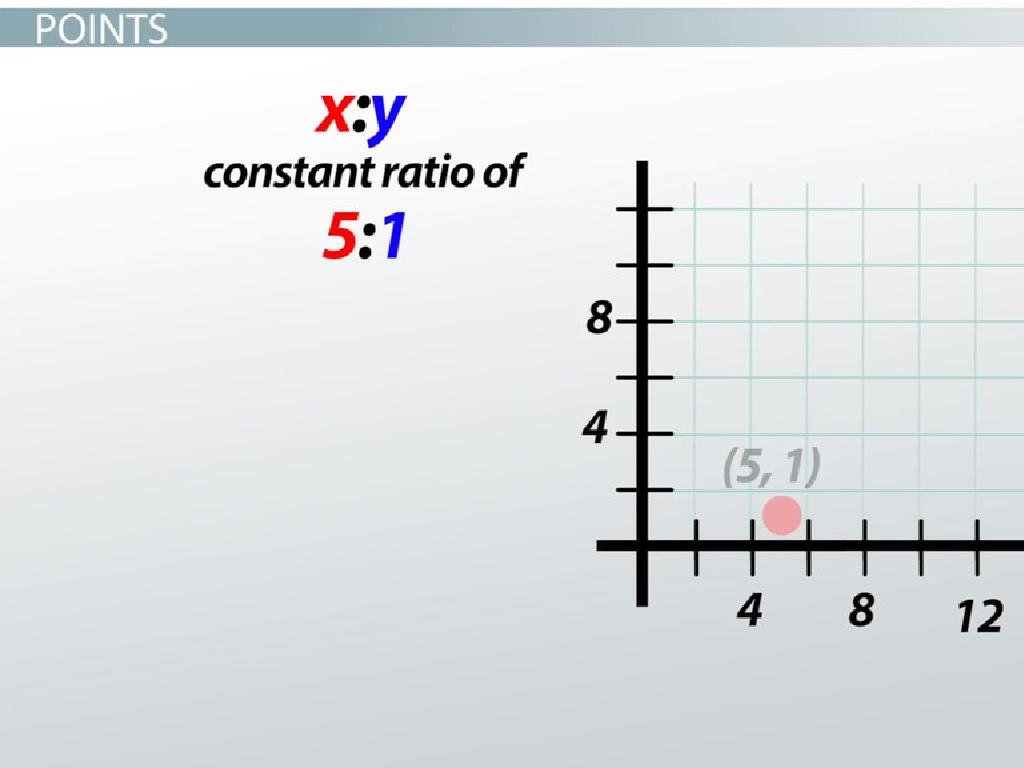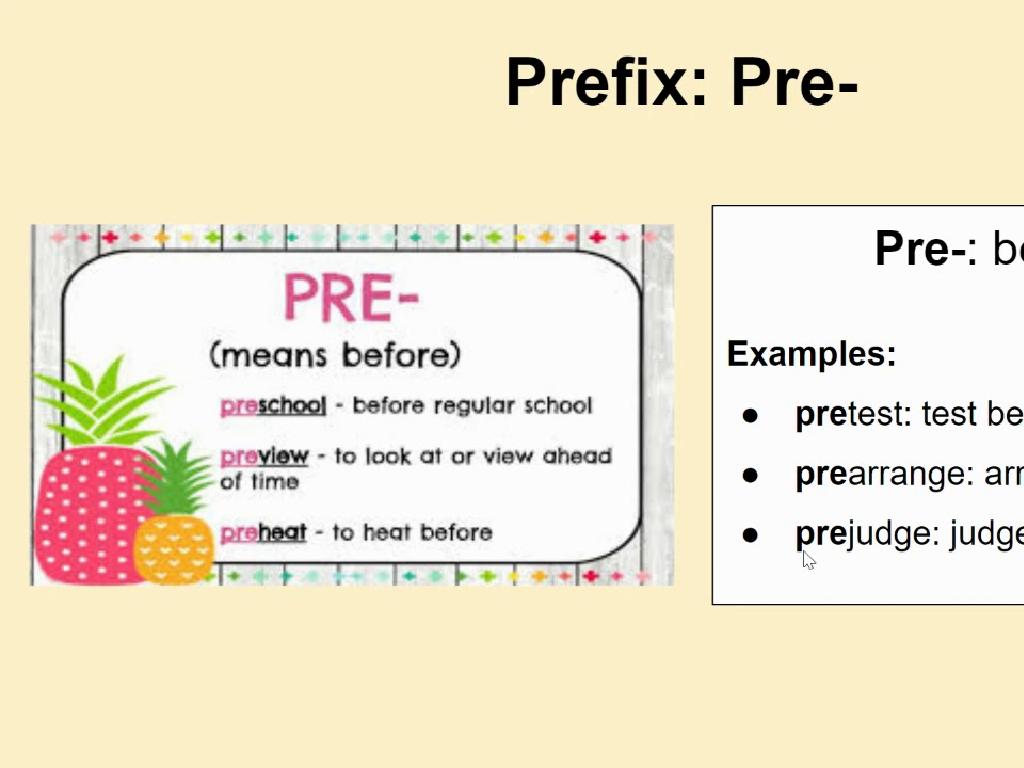Choose Between Adjectives And Adverbs
Subject: Language arts
Grade: Sixth grade
Topic: Adjectives And Adverbs
Please LOG IN to download the presentation. Access is available to registered users only.
View More Content
Spicing Up Sentences: Adjectives and Adverbs
– Role of adjectives and adverbs
– Adjectives describe nouns; adverbs describe verbs, adjectives, or other adverbs.
– Adding flavor to sentences
– They make sentences more vivid and precise.
– Literature examples
– ‘The quick brown fox’ uses adjectives; ‘He ran quickly’ uses an adverb.
– Class activity: Identify and create
– Find examples in your favorite book and craft your own flavorful sentences.
|
This slide introduces the concept of adjectives and adverbs to students, emphasizing their importance in adding detail and depth to writing. Adjectives modify nouns and pronouns, while adverbs modify verbs, adjectives, and other adverbs. Provide examples from well-known literature to illustrate how these parts of speech enhance storytelling. Engage students with an activity where they identify adjectives and adverbs in a passage from a book they enjoy and then create their own sentences using adjectives and adverbs. This will help them understand how these descriptive words can change the tone and imagery of a sentence.
Understanding Adjectives
– Adjectives modify nouns
– They give more information about nouns
– Answer ‘Which?’, ‘What kind?’, ‘How many?’
– Help describe objects, people, and situations
– Example: ‘blue sky’
– ‘Blue’ describes the color of the sky
– Example: ‘loud music’
– ‘Loud’ describes the volume of music
|
This slide introduces adjectives to the students, explaining their role in sentences as words that describe or modify nouns. It’s important to highlight that adjectives can provide details about the appearance, quantity, opinion, size, etc., of a noun. Use examples like ‘blue sky’ to illustrate adjectives that describe color and ‘loud music’ for adjectives that describe sound. Encourage students to think of adjectives that they use every day and to be prepared to identify adjectives in sentences during class activities.
Exploring Adverbs
– Adverbs modify verbs, adjectives, adverbs
– They tell us more about how actions are done.
– Answer ‘How?’, ‘When?’, ‘Where?’, ‘Extent?’
– They help specify time, place, and degree in sentences.
– Example: ‘quickly ran’
– Describes running with speed: How did they run?
– Example: ‘very tall’, ‘almost never’
– ‘very’ modifies ‘tall’ (adjective), ‘almost’ modifies ‘never’ (adverb)
|
This slide introduces adverbs to the students, explaining their role in a sentence. Adverbs are words that modify or describe verbs, adjectives, and even other adverbs, providing more detail. They can answer questions like ‘How?’, ‘When?’, ‘Where?’, and ‘To what extent?’ which helps in understanding the intensity, manner, time, or place of the action or characteristic described. Use examples like ‘quickly ran’ to show adverbs in action with verbs, and ‘very tall’ or ‘almost never’ to demonstrate adverbs modifying adjectives and other adverbs. Encourage students to come up with their own sentences using adverbs to describe actions, qualities, or other adverbs.
Choosing Between Adjectives and Adverbs
– Adjectives describe nouns
– Example: ‘The colorful bird sang.’ (Colorful describes bird)
– Adverbs modify verbs, adjectives, or adverbs
– Example: ‘She sings beautifully.’ (Beautifully describes how she sings)
– Use ‘How?’, ‘When?’, ‘Where?’ for adverbs
– If a word answers any of these questions, it’s an adverb
– Practice choosing the correct modifier
– We’ll do exercises to apply these rules
|
This slide aims to help students differentiate between adjectives and adverbs, which is a key skill in grammar. Adjectives provide details about nouns, such as size, color, or quantity. Adverbs, on the other hand, give us more information about how, when, or where something happens and can modify not just verbs but also adjectives and other adverbs. The ‘How?’, ‘When?’, or ‘Where?’ trick is a simple way for students to test whether a word is an adverb. To reinforce learning, students will complete exercises where they choose the correct modifier for sentences, ensuring they understand the practical application of the rules.
Adjectives vs. Adverbs: Examples and Practice
– Identify: adjective or adverb needed
– ‘The cat moves _____ (graceful/gracefully)’. Which describes the action?
– Choose the correct form
– ‘She sang _____ (beautiful/beautifully) at the concert.’ Focus on how she sang.
– Create sentences with adjectives/adverbs
– Fill in blanks in sentences with your own descriptive words.
– Share your examples in class
|
This slide is designed for a class activity where students will practice distinguishing between adjectives and adverbs. The first activity helps them understand when to use each type of word by choosing the correct form to complete a sentence. The second activity requires them to apply this knowledge by choosing the correct word form in a given context. For the third activity, students will create their own sentences using adjectives and adverbs, enhancing their understanding of the material. Encourage creativity and provide guidance on the usage of descriptive words. During the next class, students can share their sentences and discuss the choices they made, fostering a collaborative learning environment.
Class Activity: Adjective or Adverb?
– Understanding adjectives vs. adverbs
– Interactive board exercise
– We’ll write sentences and analyze them as a class
– Volunteer for sentence completion
– Students will choose the correct word to complete sentences
– Group story creation task
– Use at least five adjectives and five adverbs in a story
|
This slide introduces an interactive class activity to help students understand the difference between adjectives and adverbs. Begin by explaining that adjectives describe nouns, while adverbs modify verbs, adjectives, and other adverbs. Write incomplete sentences on the board, leaving blanks where adjectives or adverbs should be. Invite volunteers to come up and fill in the blanks with the appropriate words. For the group activity, divide the class into small teams and have them create short stories that include at least five adjectives and five adverbs. This will encourage creative thinking and application of the lesson. Provide guidance and examples as needed. Possible activities: 1) Matching game with adjectives and adverbs, 2) Adjective and adverb charades, 3) ‘Adjective or Adverb’ quiz, 4) Crafting sentences from a given set of adjectives and adverbs, 5) Peer review of created stories to ensure correct usage of adjectives and adverbs.
Wrapping Up: Adjectives & Adverbs
– Recap: Adjectives vs. Adverbs
– Adjectives describe nouns, adverbs describe verbs, adjectives, or other adverbs.
– Homework: Craft 10 sentences
– Create sentences using adjectives and adverbs you’ve learned.
– Include 5 adjectives and 5 adverbs
– Ensure each sentence correctly uses an adjective or adverb.
– Study for the upcoming quiz
– Review today’s lesson to prepare for the quiz on adjectives and adverbs.
|
As we conclude, remind students of the key differences between adjectives and adverbs. For homework, they should write ten sentences, ensuring they use adjectives and adverbs correctly. This will help reinforce their understanding. Encourage creativity and the use of a variety of words. In the next class, there will be a quiz, so students should study the rules and examples discussed today. Provide a study guide or a summary of key points to aid their preparation. The goal is for students to become more confident in identifying and using adjectives and adverbs in their writing.





